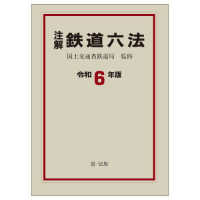- ホーム
- > 洋書
- > 英文書
- > Science / Mathematics
Full Description
This will require increased efforts of both the developed and developing countries. Much of the technology that is so successful for crop production in the developed countries cannot be utilized directly in the developing countries.








